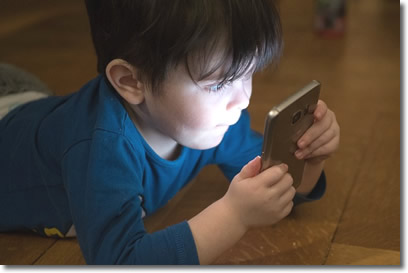The current habit of being “hooked” to our phones continuously can cause eye discomfort. Reading on these small backlit screens affects our view differently than reading printed paper. To discover how this new habit affects, so widespread in the whole population, the Complutense University of Madrid (UCM) has carried out a detailed study that has recently been published.

The study analyzes the eye health effects of prolonged reading on these electronic devices compared to paper and whether the level of these symptoms changes if read in the dark.
Conclusions
Research shows that reading more than twenty minutes on a phone instead of on paper increases nine of the ten most frequent eye symptoms, such as blurred vision, irritation and dry eyes.
The results suggest that prolonged reading on the telephone may cause more visual symptoms than reading on paper under the same conditions as letter size, reading distance, or ambient lighting.
The team of scientists evaluated ten symptoms: blurred vision during and after reading; difficulty focusing distances; irritated, dry or tired eyes; eye fatigue; sensitivity to glare; eye discomfort and headache. All but the last one, worsened after the experiment when reading on the screen.
In addition, the symptoms of eye irritation and dryness were exacerbated if the reading was done on the phone and in the dark.
The main reason the symptoms worsen is because the eye must focus at shorter distances when we hold the phone. We demand a greater effort of accommodation from our eyes when we read on the phone than when we do it on paper because we use smaller letters.
54 people with good visual health participated. In a first experience, the visual symptoms that appeared after reading a text on paper for twenty minutes were compared with those that appeared after reading a text with the same characteristics through a telephone.
In the second, the symptoms were compared after reading in this type of device with ambient lighting and in the dark, without the possibility of modifying the brightness level of the screen.
Tips
Of course, the general advice is to limit the use of the mobile phone as much as possible, but in addition to that, other habits can help us take care of something as precious as our eyesight:
- Reading our phone with ambient light, even if it is artificial. If it is done in low light or none at all, we should reduce the brightness as much as possible. If necessary, do it manually.
- The 20 – 20 – 20 Rule. It will reduce eye fatigue. It consists of resting your eyes for 20 seconds every 20 minutes of reading. We can rest it by focusing on distant objects more than 6 meters (20 feet) away or simply by closing our eyes those 20 seconds.
- Increasing the font size. Increasing the font size of our device can help reduce the effects of. We can modify this property in the general settings of the phone.
- Blinking. In a reading or absorbing activity we may not even perform the reflex act of blinking. Remember to do it periodically to avoid drying out and causing dry eye syndrome.
- Reducing blue tones at night. Most mobile devices have a feature that allows them to change the shade of the screen as we approach the night hours. Although the purpose of this function is not directly related to vision, it is highly recommended to use it for reasons related to insomnia. The bright blue colors alter our hormonal metabolism and significantly increase the time it takes us to fall asleep.
